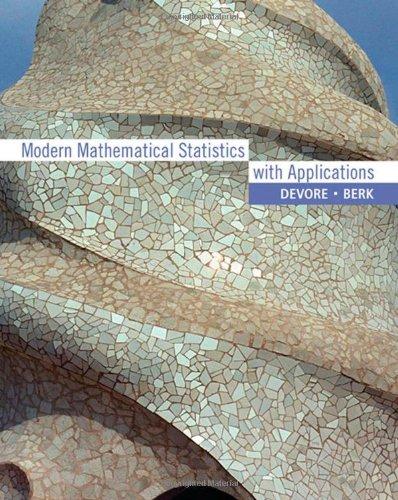18. Credit card spending and resulting debt pose very real threats to consumers in general, and the...
Question:
18. Credit card spending and resulting debt pose very real threats to consumers in general, and the potential for abuse is especially serious among college students. It has been estimated that about of all college students possess credit cards, and 80% of these students received cards during their rst year of college. The article College Students Credit Card Debt and the Role of Parental Involvement: Implications for Public Policy (J. Public Policy Marketing, 2001: 105—113)
reported that for 209 students whose parents had no involvement whatsoever in credit card acquisition or payments, the sample mean total account balance was $421 with a sample standard deviation of $686, whereas for 75 students whose parents assisted with payments even though they were under no legal obligation to do so, the sample mean and sample standard deviation were $666 and $1048, respectively. All sampled students were at most 21 years of age.
a. Do you think it is plausible that the distributions of total debt for these two types of students are normal? Why or why not? Is it necessary to assume normality in order to compare the two groups using an inferential procedure described in this chapter? Explain.
b. Estimate the true average difference between total balance for noninvolvement students and postacquisition-involvement students using a method that incorporates precision into the estimate.
Then interpret the estimate.
Note: Data was also reported in the article for preacquisition involvement only and for both preand postacquisition involvement.
Step by Step Answer:

Modern Mathematical Statistics With Applications
ISBN: 9780534404734
1st Edition
Authors: Jay L Devore






